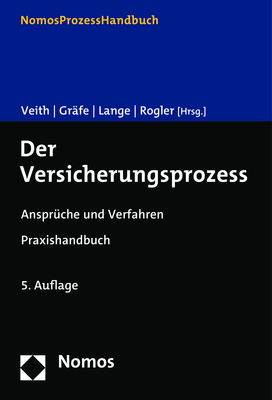
Innovations in Quantitative Risk Management
Springer International Publishing (Verlag)
978-3-319-09113-6 (ISBN)
Quantitative models are omnipresent -but often controversially discussed- in todays risk management practice. New regulations, innovative financial products, and advances in valuation techniques provide a continuous ow of challenging problems for financial engineers and risk managers alike. Designing a sound stochastic model requires finding a careful balance between parsimonious model assumptions, mathematical viability, and interpretability of the output. Moreover, data requirements and the end-user training are to be considered as well.
The KPMG Center of Excellence in Risk Management conference Risk Management Reloaded and this proceedings volume contribute to bridging the gap between academia -providing methodological advances- and practice -having a firm understanding of the economic conditions in which a given model is used. Discussed fields of application range from asset management, credit risk, and energy to risk management issues in insurance. Methodologically, dependence modeling, multiple-curve interest rate-models, and model risk are addressed. Finally, regulatory developments and possible limits of mathematical modeling are discussed.
Kathrin Glau is Junior professor for Mathematical Finance at the Technische Universität München. Her research faces the complex demands on numerical tools and modeling in today’s market reality. Her approach merges recent advances from numerical analysis and financial modeling. Thereby pricing methods in advanced models with a thorough error analysis are developed. Her speciality are Galerkin methods for partial integro differential equations for (pure) jump Levy driven models.Matthias Scherer is Professor for Mathematical Finance at the Technische Universität München. His research interests comprise various topics in Financial Mathematics, Actuarial Science, and Probability Theory. Concerning applications in risk management, he has published research articles on portfolio-credit risk, dependence modeling, and model risk. He is an active member of the management boards of the DGVFM and the KPMG Center of Excellence in Risk Management. He is co-author of the book “Simulating Copulas: Stochastic Models, Sampling Algorithms, and Applications” and provides executive seminars for different financial institutions.Rudi Zagst is Professor for Mathematical Finance, Director of the Center of Mathematics and member of the management board of the KPMG Center of Excellence in Risk Management at Technische Universität München. He is also President of risklab GmbH, a German-based consulting company offering advanced asset management solutions and is a professional trainer to a number of leading institutions. His current research interests are in financial engineering, risk and asset management.
Part I Markets, Regulation, and Model Risk.- A Random Holding Period Approach for Liquidity-Inclusive Risk Management.- Regulatory Developments in Risk Management: Restoring Confidence in Internal Models.- Model Risk in Incomplete Markets with Jumps.- Part II Financial Engineering.- Bid-Ask Spread for Exotic Options Under Conic Finance.- Derivative Pricing Under the Possibility of Long Memory in the supOU Stochastic Volatility Model.- A Two-Sided BNS Model for Multicurrency FX Markets.- Modeling the Price of Natural Gas with Temperature and Oil Price as Exogenous Factors.- Copula-Specific Credit Portfolio Modeling.- Implied Recovery Rates-Auctions and Models.- Upside and Downside Risk Exposures of Currency Carry Trades via Tail Dependence.- Part III Insurance Risk and Asset Management.- Participating Life Insurance Contracts Under Risk Based Solvency Frameworks: How to Increase Capital Efficiency by Product Design.- Reducing Surrender Incentives Through Fee Structure in Variable Annuities.- A Variational Approach for Mean-Variance-Optimal Deterministic Consumption and Investment.- Risk Control in Asset Management: Motives and Concepts.- Worst-Case Scenario Portfolio Optimization Given the Probability of a Crash.- Improving Optimal Terminal Value Replicating Portfolios.- Part IV Computational Methods for Risk Management.- Risk and Computation.- Extreme Value Importance Sampling for Rare Event Risk Measurement.- A Note on the Numerical Evaluation of the Hartman-Watson Density and Distribution Function.- Computation of Copulas by Fourier Methods.- Part V Dependence Modelling.- Goodness-of-fit Tests for Archimedean Copulas in High Dimensions.- Duality in Risk Aggregation.- Some Consequences of the Markov Kernel Perspective of Copulas.- Copula Representations for Invariant Dependence Functions.- Nonparametric Copula Density Estimation Using a Petrov-Galerkin Projection.
| Erscheint lt. Verlag | 22.1.2015 |
|---|---|
| Reihe/Serie | Springer Proceedings in Mathematics & Statistics |
| Zusatzinfo | XI, 438 p. 84 illus. |
| Verlagsort | Cham |
| Sprache | englisch |
| Maße | 155 x 235 mm |
| Gewicht | 804 g |
| Themenwelt | Mathematik / Informatik ► Mathematik ► Angewandte Mathematik |
| Wirtschaft ► Allgemeines / Lexika | |
| Betriebswirtschaft / Management ► Spezielle Betriebswirtschaftslehre ► Versicherungsbetriebslehre | |
| Schlagworte | 91B30, 91B82, 91B25, 91B24 • credit risk • Dependence Modeling • interest-rate modeling • model risk • Quantitative Finance • Risk Management |
| ISBN-10 | 3-319-09113-1 / 3319091131 |
| ISBN-13 | 978-3-319-09113-6 / 9783319091136 |
| Zustand | Neuware |
| Informationen gemäß Produktsicherheitsverordnung (GPSR) | |
| Haben Sie eine Frage zum Produkt? |
aus dem Bereich


